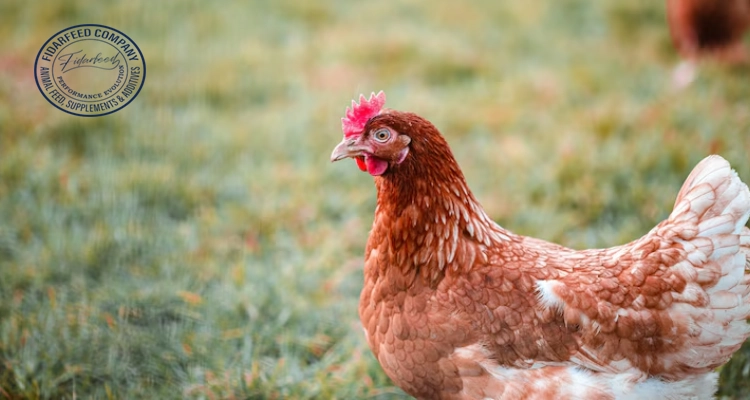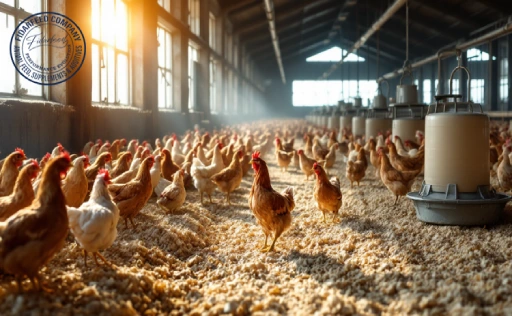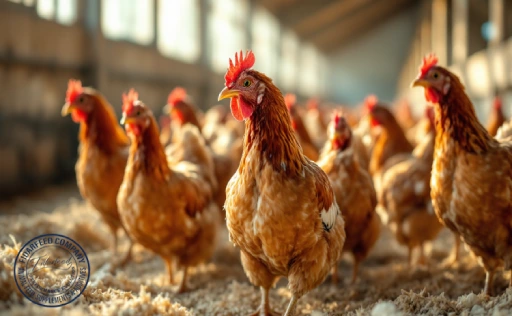
Cobb Chicken Breeds are among the most recognized and widely used broiler chickens in the world—and for good reason. Whether you’re a seasoned poultry farmer or just starting your journey in chicken breeding, understanding why Cobb breeds dominate the broiler industry can open doors to greater efficiency, better meat quality, and stronger profitability. In this comprehensive guide, we’ll walk you through everything you need to know about Cobb chickens: their history, characteristics, performance metrics, and practical management tips. Read on to discover how you can unlock the full potential of this world-class breed.
What Are Cobb Chicken Breeds and Why Are They So Popular?
Cobb chicken breeds are specially developed broiler chickens known for their rapid growth, excellent feed efficiency, and high-quality meat production. Their popularity stems from a combination of science-driven breeding practices and real-world results. Farmers across more than 100 countries trust Cobb breeds for consistent output, adaptability to different environments, and strong returns on investment.
Learn more about: Active Probiotic Yeast for Poultry
They’re not just birds—they’re a result of decades of genetic refinement. What makes Cobb breeds stand out is their ability to convert feed into meat quickly and cost-effectively. That’s why they’re a staple in commercial poultry operations, from small family farms to large integrated systems.
The History and Evolution of Cobb Chicken Breeds
The story of Cobb began in the United States during the early 20th century. What started as a small family breeding effort grew into one of the largest poultry genetics companies in the world—Cobb-Vantress, a subsidiary of Tyson Foods. Over the decades, Cobb has focused on combining high-performance genetics with a commitment to animal welfare and sustainability.
Learn more about: Cobb 500 Broiler Manual: Your Complete Guide to Profitable Poultry Farming
Cobb’s progress hasn’t come overnight. It’s the result of rigorous selection programs, performance testing, and international collaboration. Their breeds have evolved to meet changing consumer preferences and production challenges. Today, Cobb chickens are bred not only for growth but also for resilience, livability, and meat quality.

Key Characteristics That Define Cobb Chicken Breeds
Cobb chickens are known for their broad breast muscles, uniform growth, calm temperament, and high survival rates. They reach market weight (around 2.5 kg) in approximately six weeks, depending on the feeding program and management conditions.
They also have excellent Feed Conversion Ratios (FCR)—a metric that determines how efficiently chickens convert feed into body weight. The lower the FCR, the more profitable your operation becomes. Cobb birds typically have an FCR below 1.6 when properly managed.
Learn more about: Ross 308 vs. Cobb 500: Which Broiler Breed is Right for You?
Their behavior is generally docile, making flock management easier and reducing injuries from aggression or stress-induced pecking.
Cobb 500 vs Cobb 700: Which Breed Is Right for Your Farm?
Two of the most widely used variants in the Cobb family are Cobb 500 and Cobb 700. While both deliver excellent performance, they serve slightly different purposes.
-
Cobb 500 is favored for its fast growth, low feed intake, and high meat yield at lower weights. It’s ideal for operations targeting quick turnaround and high volume.
-
Cobb 700, on the other hand, is designed for heavier birds. It produces more breast meat and performs well under longer grow-out periods, making it a great choice for markets demanding larger broilers.
Learn more about: Why Poultry Producers Trust Bentonite in Layer Feed
Your selection should be guided by your target market, production capacity, and feed costs.

Growth Rate and Feed Conversion in Cobb Chickens
One of the standout features of Cobb chickens is their impressive growth rate. With optimal conditions, they can gain over 50 grams per day during peak growth phases. Studies from institutions like the University of Arkansas have shown that Cobb broilers can reach processing weight faster than most other breeds.
Learn more about: Cobb 500: The Broiler Breeder’s First Choice – Unveiled
But growth means nothing without efficiency. Cobb birds boast exceptional feed conversion—a trait that directly affects your bottom line. For example, if your Cobb flock converts 1.5 kg of feed into 1 kg of body weight, you’re saving significantly on feed costs compared to a breed with an FCR of 1.8 or higher.
Health and Immunity: How Cobb Breeds Stay Strong
Cobb chickens are selectively bred not just for size and speed, but also for strong immunity and disease resistance. This makes them more resilient in commercial conditions where exposure to pathogens is a concern.
However, no breed is immune to poor management. To maintain flock health, follow strict biosecurity protocols, use vaccines appropriately, and ensure consistent sanitation practices. Cobb-Vantress offers health guides tailored to their breeds, helping farmers align their health programs with genetic potential.

Environmental Needs and Housing for Cobb Chickens
Creating the right environment is critical to unlocking the genetic potential of Cobb breeds. Your broiler house should provide:
-
Consistent temperatures: Start chicks at 32–33°C and gradually reduce to around 21°C.
-
Proper ventilation: Fresh air without drafts supports respiratory health.
Learn more about: Early Signs of Marek’s Disease in Chickens: How to Detect and Act Fast
-
Dry litter: Use absorbent material like wood shavings to manage moisture.
-
Lighting schedules: Balanced light and dark periods improve feeding behavior and reduce stress.
Ample space is also vital. Avoid overcrowding, especially in the last two weeks before harvest, to prevent heat stress and leg issues.
Feeding Programs for Cobb Chicken Breeds: What You Need to Know
Cobb chickens require a well-structured feeding plan to reach their full potential. Feed should be formulated for each phase of life:
-
Starter (0–10 days): High protein (22–24%) and energy to support initial growth.
-
Grower (11–25 days): Slightly lower protein but higher calorie intake to fuel rapid development.
-
Finisher (26 days to market): Balanced diet to maximize weight gain and meat quality.
Learn more about: Mastering the Basics: A Comprehensive Broiler Breeder Management Guide
Include essential nutrients like methionine, lysine, vitamins A, D, E, and trace minerals. Regularly monitor feed intake and adjust based on performance data.

Meat Quality and Market Performance of Cobb Chickens
Cobb breeds produce tender, juicy meat with excellent breast yield—two qualities that consumers love. Whether you’re supplying supermarkets, restaurants, or live bird markets, Cobb chickens consistently deliver on texture, color, and flavor.
Learn more about: Smart Chicken Waste Management: Sustainable Solutions for Poultry Farmers
Their ability to meet high-quality standards has earned them global recognition, making them a preferred choice for large poultry integrators and independent producers alike.
Common Mistakes When Raising Cobb Chickens (And How to Avoid Them)
Even the best genetics can’t overcome poor management. Some common mistakes to avoid include:
-
Overfeeding in early stages, which leads to leg problems.
-
Neglecting water quality, affecting digestion and feed intake.
Learn more about: Exploring Layer Breeder Chicken Breeds: Characteristics and Benefits of Each
-
Poor ventilation, increasing disease risk.
-
Inconsistent lighting, disrupting growth cycles.
Stay proactive. Use checklists, conduct routine health checks, and respond quickly to behavioral or performance changes in your flock.

Is Cobb the Right Choice for Your Poultry Business?
Choosing Cobb chicken breeds is a strategic decision. If you’re aiming for high-volume, fast-paced production with strong market demand, Cobb is an excellent fit. Their genetic makeup allows for flexibility across different climates and production systems.
Learn more about: Poultry Diseases: A Perpetual Nightmare in Poultry Farming
However, they do require precise management to reach peak performance. If you’re ready to commit to high standards of care, nutrition, and monitoring, the results can be both rewarding and profitable.
Final Thoughts: Maximizing Success with Cobb Chicken Breeds
Cobb chicken breeds represent the cutting edge of broiler genetics. They grow fast, convert feed efficiently, and deliver meat that satisfies modern market demands. But the true success of raising Cobb chickens lies in your hands—as a breeder, caretaker, and business operator.
By understanding their needs and optimizing your practices, you can build a sustainable, productive, and profitable poultry operation. Whether you’re scaling an existing farm or starting fresh, Cobb chickens offer a reliable pathway to growth.
We’d love to hear from you! Share your experiences with Cobb breeds in the comments, ask questions, or let us know what topics you’d like us to explore next.



